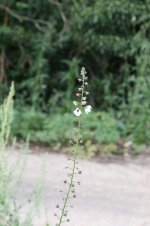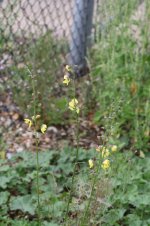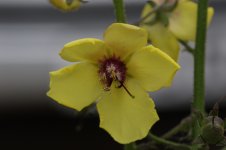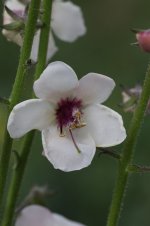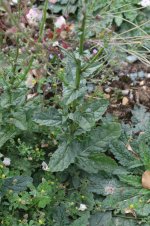DoghouseRiley
Well-known member
Hi All
I found a smattering of verbascum plants at the entrance of a sewage works.
Both seemed to be the same species, with different colour forms.
The only two likely candidates I could find in Cassell's were:
Verbascum blattaria (Moth Mullein), though it looks like there leaves are pale and hairy.
Verbascum Virgatum, mentioning gladular hairs which can be seen in the pictures.
Couild someone please take a look and ID?
Yours, Gareth
I found a smattering of verbascum plants at the entrance of a sewage works.
Both seemed to be the same species, with different colour forms.
The only two likely candidates I could find in Cassell's were:
Verbascum blattaria (Moth Mullein), though it looks like there leaves are pale and hairy.
Verbascum Virgatum, mentioning gladular hairs which can be seen in the pictures.
Couild someone please take a look and ID?
Yours, Gareth




